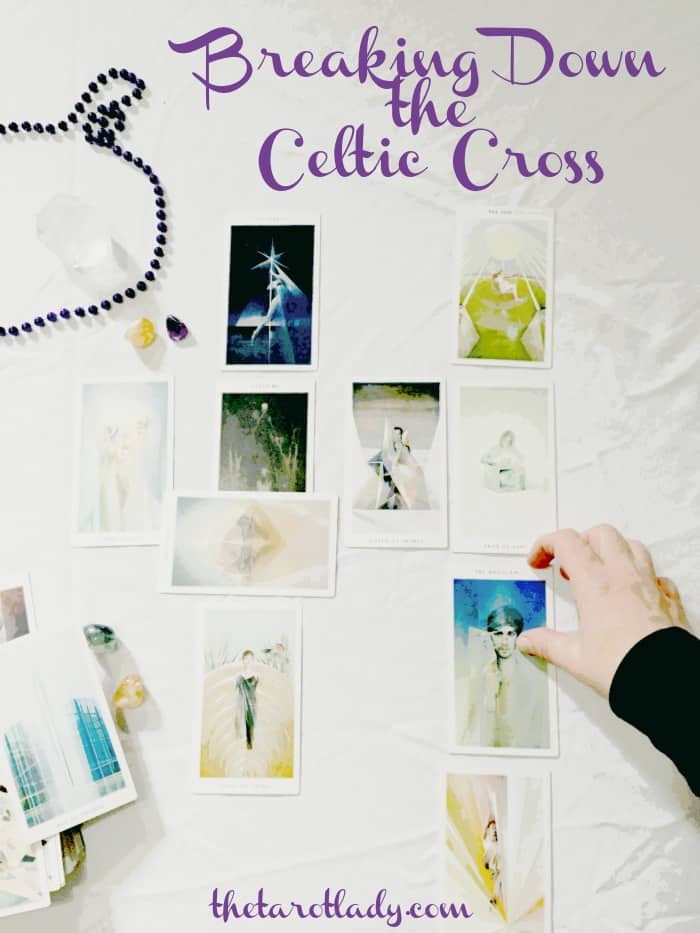
The Celtic Cross is one of the most famous tarot spreads. Many readers use it…yet many more are intimidated by it.
The Celtic Cross can give a wealth of information about a particular situation but it also lends well to general outlooks or closing spreads, which is why I think it’s particularly brilliant.
This series is intended to help take the fear out of it – and help you discover tips ‘n tweaks so that you can get the hang of it once and for all. Stay tuned as I continue to add tutorials to this series once a month.
When I started reading tarot, the first deck I owned was the Marseilles and the Celtic Cross was the first spread I learned. For a teenage wannabe tarot reader, this was a daunting beginning. With no illustrated pip cards, The Marseilles was challenging enough – but that big ole Celtic Cross? It took a lot of practice before I could even remember how to lay it out and what the positions meant. (PS back in the day, there was no internet and living in a rural area didn’t give me access to a lot o’ decks or texts on tarot. I was on my own!)
In time, I got it down. Eventually, I also got my mitts on The Rider Waite deck, which clicked with me instantly. Suddenly, I started to see the patterns, how the different positions might influence a situation, and how versatile the Celtic Cross could be. It’s been a 35 year love affair ever since!
My aim in this series is to get you to fall in love with the Celtic Cross and discover lots of different angles to explore. But first – we must start with the most basic lesson of all:
How to lay it out.
The Celtic Cross is comprised of ten cards, six of which are laid out in a cross formation while the other four are in a vertical row on the right side of the cross (see image below).
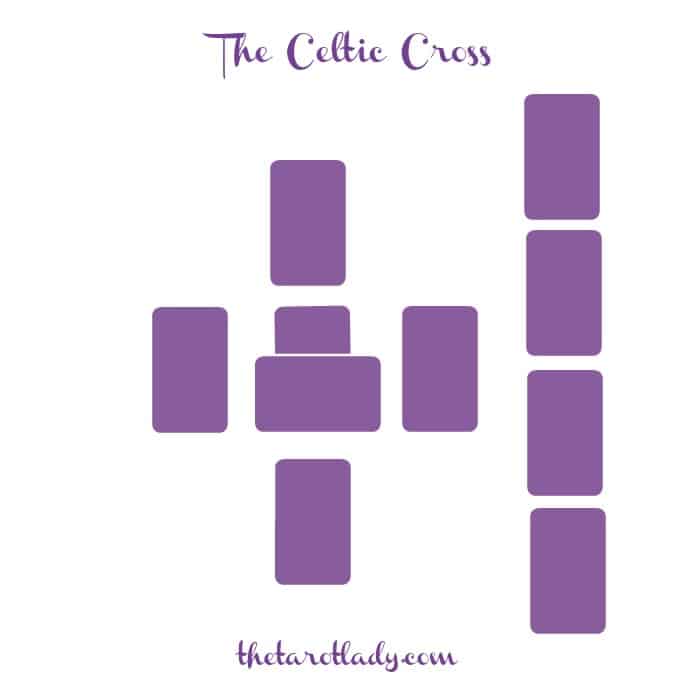
I’ve seen some variations on how the cards should be laid out – often with positions 3 and 5 reversed but I prefer the way I learned because I feel makes total sense. Here’s how to lay it out and a brief description of what each position means:
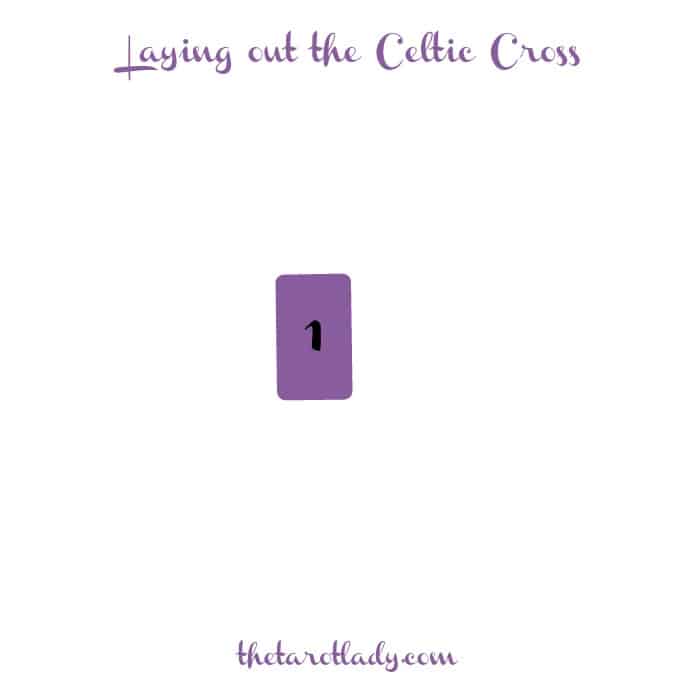
1 – this is the present moment; where you are right now; the heart of the matter; where things stand.
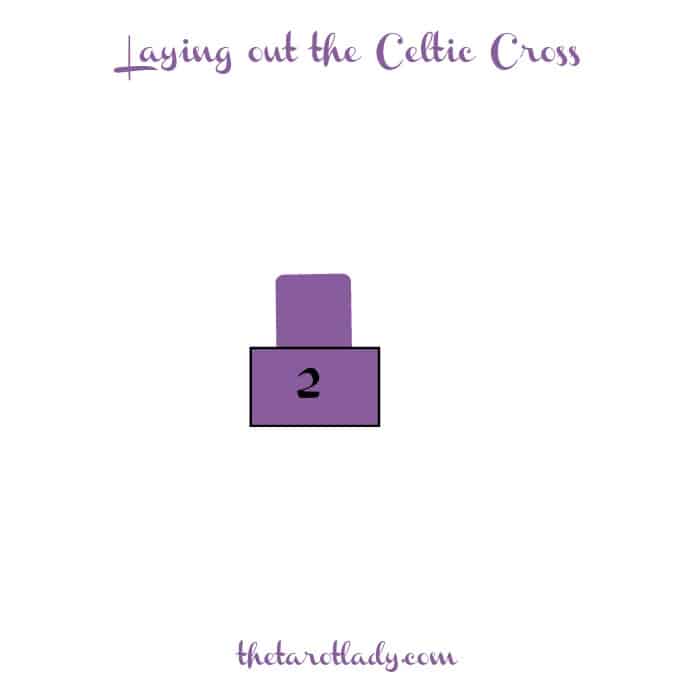
2 – this is what crosses you, for good or ill. Position two shows potential obstacles or support.
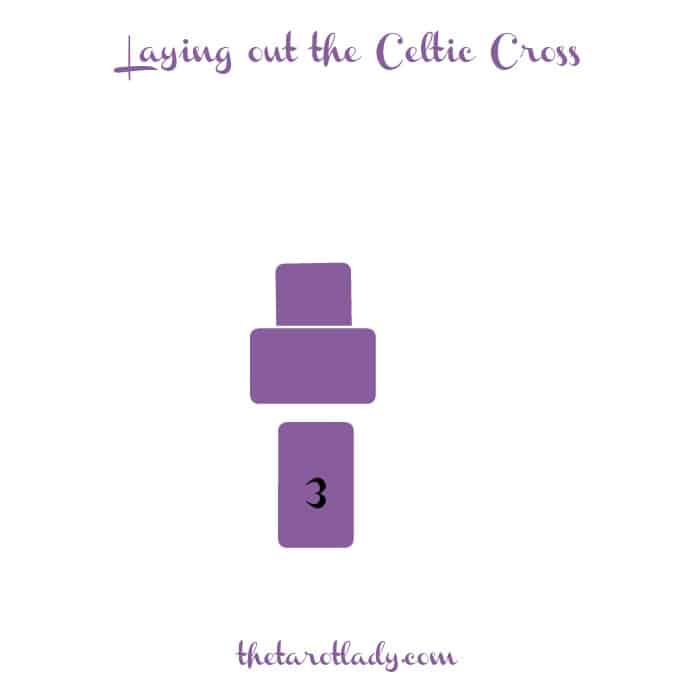
3 – this is the foundation of the situation, or the past conditions that have lead to the present. It’s where you’re coming from. The source.
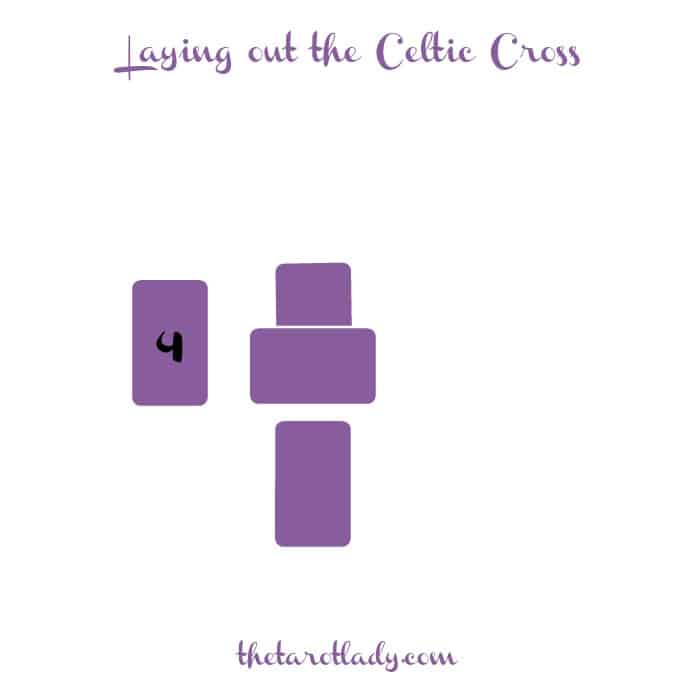
4 – this is the recent past or the things that are just starting to move into the background. The energy of this card may still be lingering but it’s on the way out.
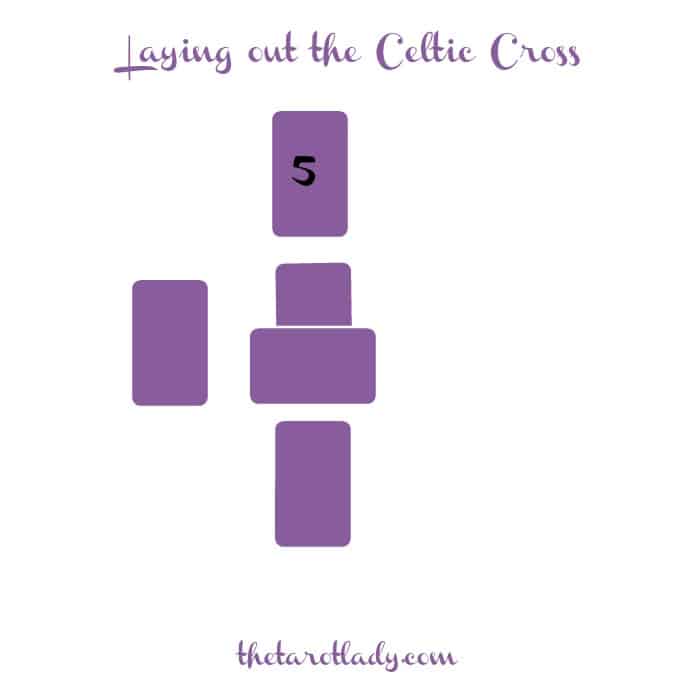
5 – situations on the horizon or what may come into being, the possibilities. Some people say “this is what crowns you”. It may reflect where you want to go.
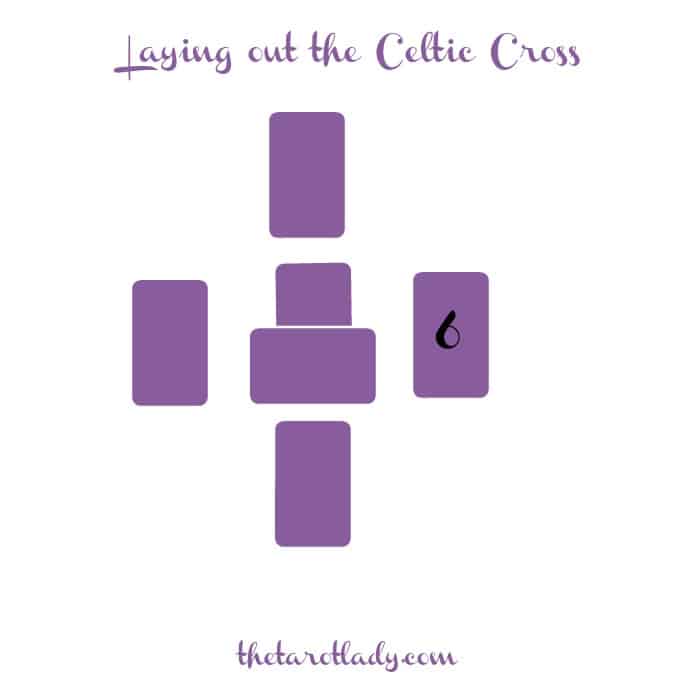
6 – this is the near future or what is coming/developing from the situation.
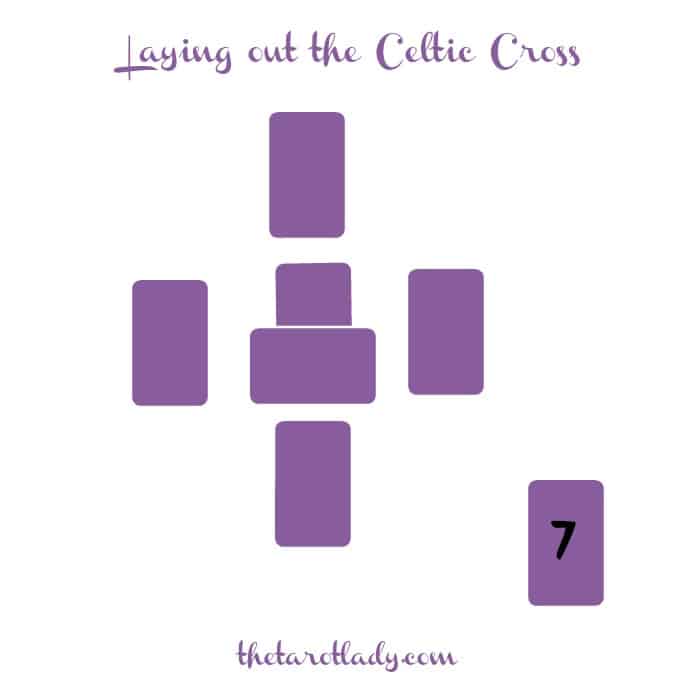
7 – this is the querent at the moment. This can reflect the querent’s current position – or their current attitude towards the situation.
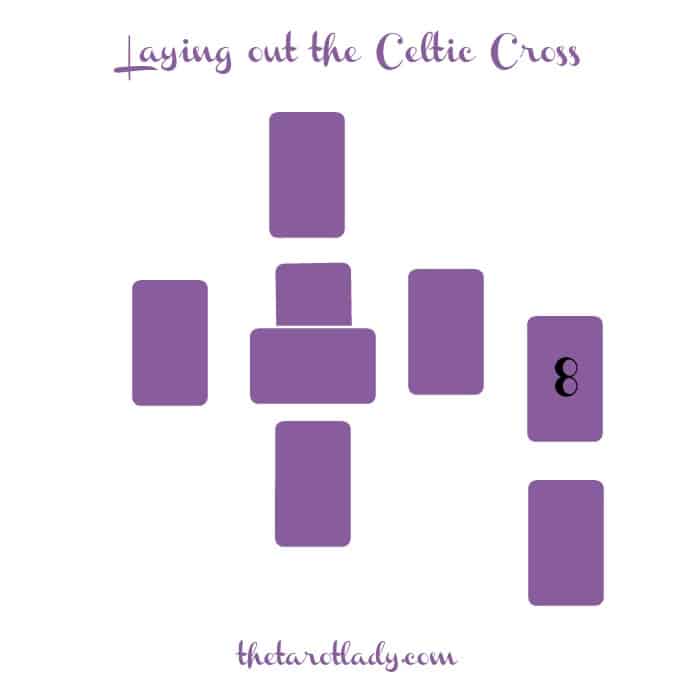
8 – this is the environment, surroundings or other influences. This position can be the home or work environment as well as other people who may be influencing the situation.
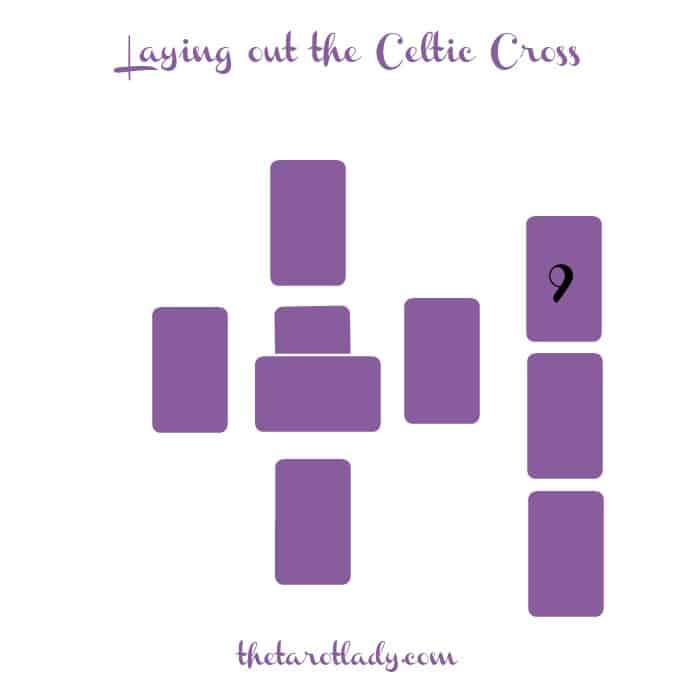
9 – this is the hopes and fears of the querent. It can also symbolize the shadow work needing to be done.
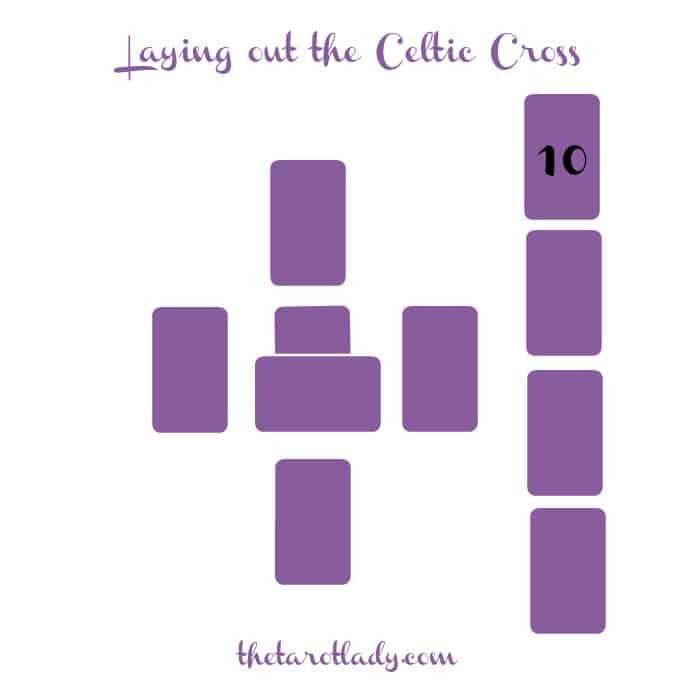
10 – this is the outcome or where you’re headed. Once you interpret this card, then you can begin looking at additional spreads or cards to decide on courses of action, especially if the outcome looks unfavorable (more on that in a future lesson).
When you consider this method, you’ll see that position 3 as the foundation position and then moving clockwise around the middle cross makes logical sense – we are looking at the basis, or how we got to where we are today, and moving forward in a nice, fluid way.
Some readers will pick a significator to represent the querent before they even shuffle the cards and lay out the spread. This is a matter of personal preference. I don’t do this because I believe that the energy the person is manifesting at the time of the reading will show up in the reading. There will be a future tutorial on significators in the Celtic Cross but for now…don’t worry about it.
Instead, your homework is to practice laying it out and remembering what each position means.
Next month, we’re going to start diving into the positions, one by one.
Blessings,
Theresa
© Theresa Reed | The Tarot Lady 2016
deck featured in the image is the fabulous Fountain Tarot

 I’m Theresa Reed (aka, The Tarot Lady). I’ve been a full-time tarot reader for 30+ years — which, in my industry, makes me pretty badass.
I’m definitely not your average Tarot expert — I drop the F-bomb, I quote rappers, and I’m obsessed with pop culture + reality TV. Folks come to me for straight-talk + tough-love — without the woo-woo fluff.
I’m Theresa Reed (aka, The Tarot Lady). I’ve been a full-time tarot reader for 30+ years — which, in my industry, makes me pretty badass.
I’m definitely not your average Tarot expert — I drop the F-bomb, I quote rappers, and I’m obsessed with pop culture + reality TV. Folks come to me for straight-talk + tough-love — without the woo-woo fluff.
You must be logged in to post a comment.